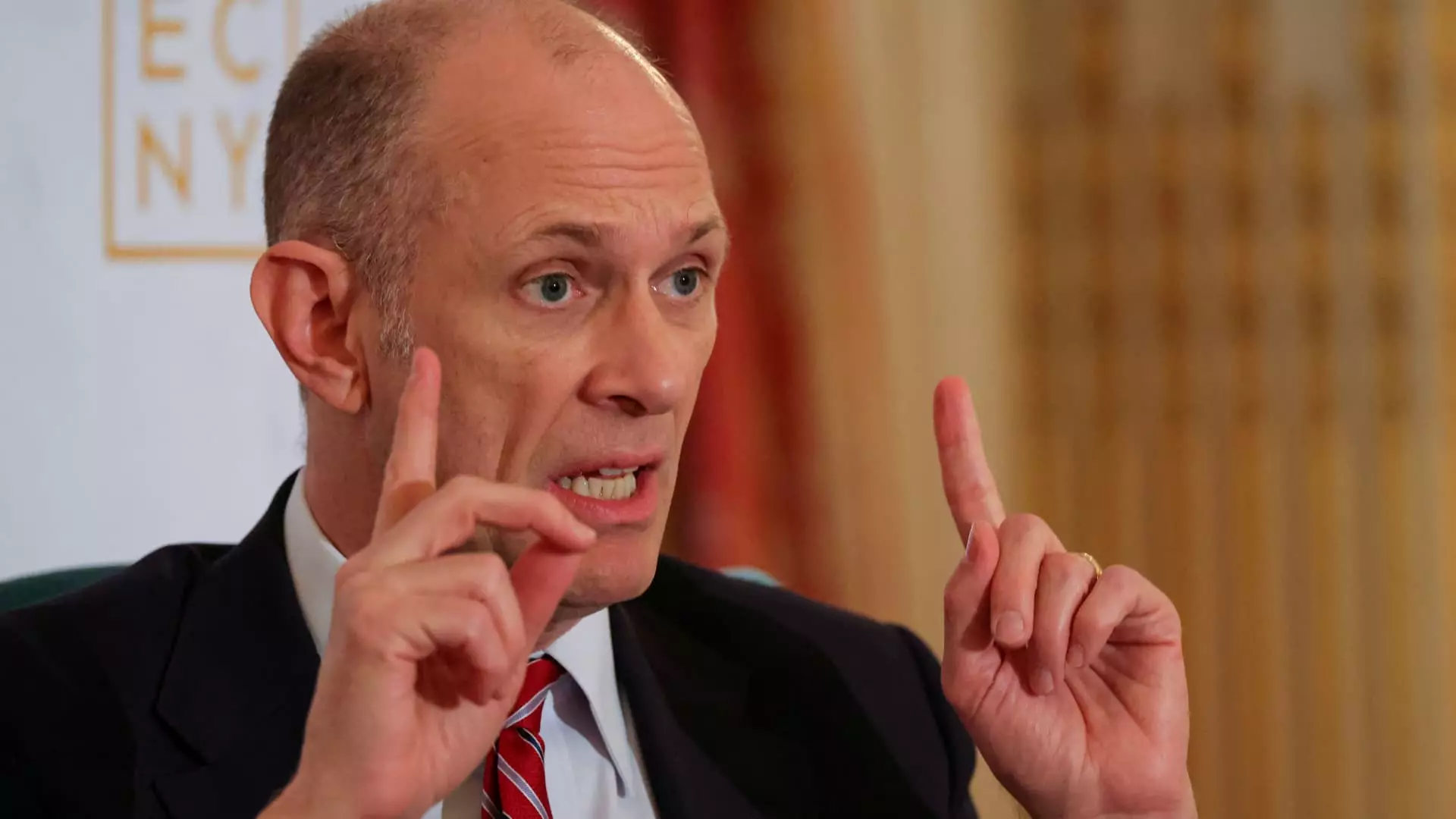In an era marked by escalating trade tensions, the statements from Austan Goolsbee, President of the Chicago Federal Reserve, serve as a stark reminder of how fragile our economic landscape currently is. Goolsbee’s recent comments express concern about President Donald Trump’s aggressive tariff threats that have introduced a level of unpredictability into fiscal policy. His observation that the Federal Reserve is likely to hold on interest rate changes speaks volumes about the precarious situation where trade policy collides with monetary strategy.
The troubling reality is that tariffs, particularly those targeting critical economic partners such as the European Union, create a ripple effect that disrupts both inflation and employment figures. The fact that such a significant player in the global economy can announce intentions of imposing 50% tariffs is not simply a head-scratcher; it poses real risk. The economist’s warning about the potential stagflationary impact suggests a path to economic malaise rather than growth. For those who follow economic indicators closely, this shouldn’t come as a surprise. It reflects a broader pattern where short-term political gains overshadow long-term economic stability.
Market Shock and Consumer Sentiment
The immediate effects of Trump’s tariff threats on markets often manifest as volatility that leaves investors, consumers, and policymakers alike in a lurch. Goolsbee’s acknowledgment of rising bond yields associated with fiscal policy anxieties captures the essence of a market in distress. When tariffs are introduced, especially on high-demand products like Apple’s iPhones, the average consumer feels the pinch, exacerbating inflationary concerns. It’s not merely the cost of the devices; it’s about consumer confidence and spending habits that pivot on affordability and economic predictability.
The suggestion that a 25% tariff on imported smartphones won’t significantly impact the economy is a misleading narrative. For the everyday businessman or college student, this added burden leads to more cautious spending. When the Fed grapples with potential rate cuts as a countermeasure, the broader socio-economic implications cannot be ignored. The connection between consumer buying power and overall economic health is well-documented, yet political posturing is pushing us to ignore the obvious.
The Central Bank’s Tightrope Act
Goolsbee’s role as a voting member of the Federal Open Market Committee places him at the nexus of these conflicting pressures. With the Fed’s benchmark rate holding steady between 4.25% and 4.50%, it’s clear that the central bank is treading carefully. The hesitance expressed in terms of making definitive moves in either direction is reflective of an institution wrestling with an uncertain environment created largely by external political forces rather than intrinsic economic factors.
The forthcoming meetings in June will serve as a litmus test for how seriously the Federal Reserve takes the evolving trade landscape. Optimistically, Goolsbee hints at a potential return to solid economic growth, provided we can navigate through the turbulence of current policies. However, relying solely on hope amid such volatile conditions is akin to walking on a tightrope without a safety net. The very structure of the economy requires decisions anchored in data, yet the deepening uncertainties surrounding trade policies require a level of adaptability not often seen in central banking.
The Future Under Uncertain Policies
As we stand at this critical juncture, it becomes apparent that the consequences of tariff policies extend beyond abstract economic theories into the daily struggles and decisions of ordinary citizens. The fears of inflation that Goolsbee articulates resonate deeply, particularly when they translate into higher living costs and diminished purchasing power for families and individuals. Economic forecasts that anticipate two rate cuts in the coming year may provide some respite, but this relief must be weighed against the chaotic backdrop of trade disputes and protectionist policies.
In a world where trade statistics and currency valuations swing wildly in response to presidential tweets and proclamations, the stability of our economic framework is less a fait accompli and more a balancing act, precariously teetering under the weight of decisions made in the name of securing short-term political gain. The lens through which we view this unfolding drama must shift towards a more critical examination of the policies that impact not just Wall Street but Main Street. The leadership must remain vigilant, and the populace engaged, as we chart a course through these tempestuous waters.

